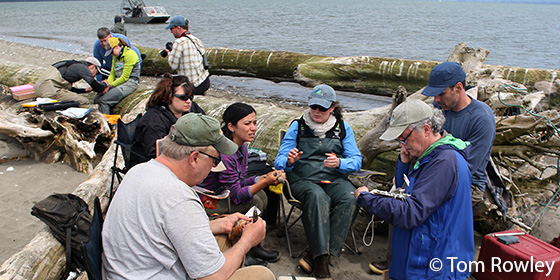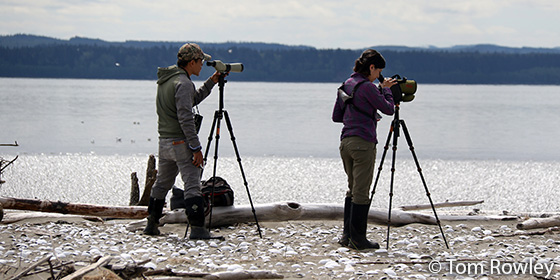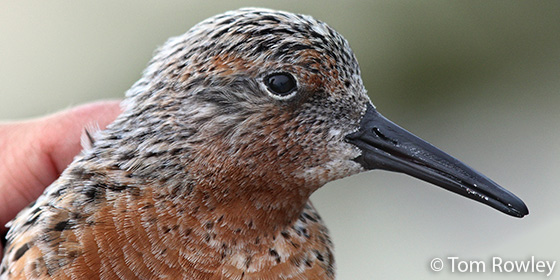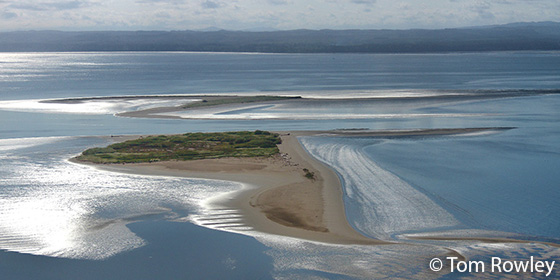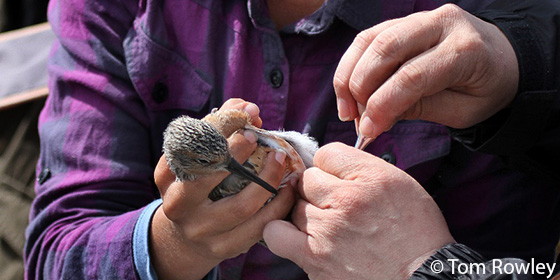Linking Sites, Linking Communities
Pacific Flyway Exchange
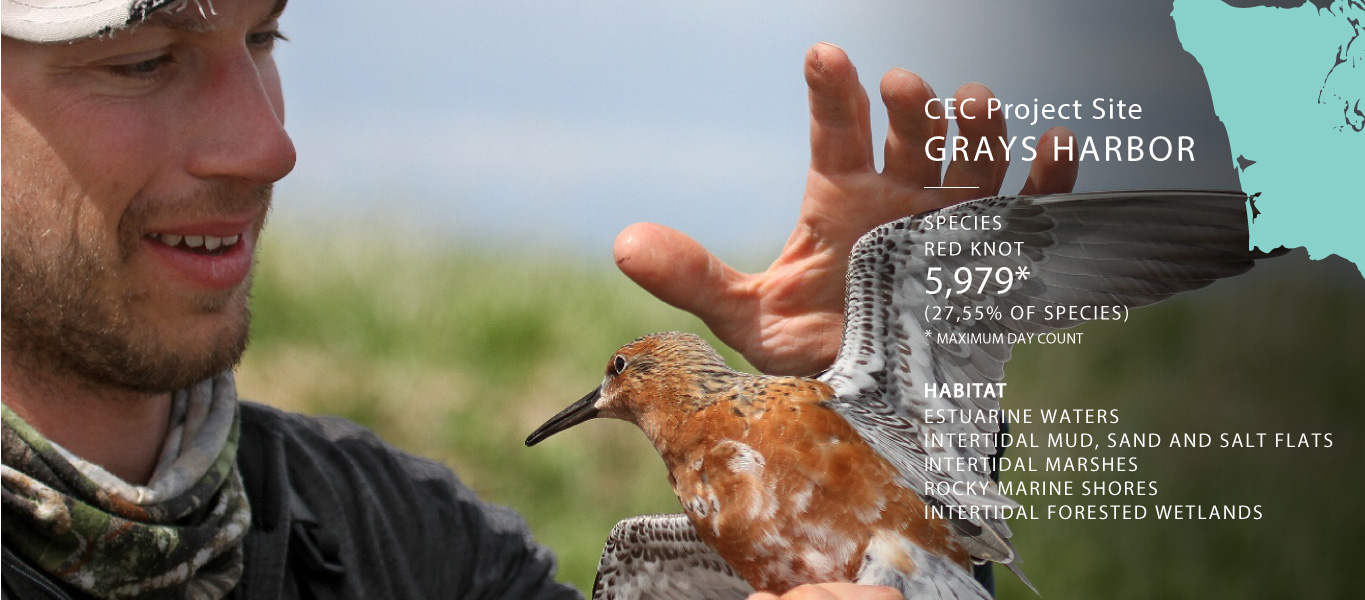
Washington, United States
Grays Harbor is a large bay on the southern coast of Washington State used by Red Knots and many other species of shorebirds for roosting and foraging during migration.
In recognition of its importance as a critical stopover site for over 500,000 shorebirds every year, Grays Harbor was designated a Site of Hemispheric Importance by the Western Hemisphere Shorebird Reserve Network (WHSRN) in 1995.
Red Knots
Red Knots (roselaari) use the site’s extensive silt and silt-sand tidal flats during spring (northbound) migration. However, aspects of the species’ migratory connectivity are not well understood, particularly with respect to breeding areas. To address the dearth of breeding-range information, the CEC supported an undertaking to attach satellite transmitters to Red Knots in Grays Harbor, to track their migration north from coastal Washington. In addition, CEC supported an exchange enabling three representatives from other important shorebird sites along the North American Pacific Flyway to experience Red Knot tagging.
Participants
Two participants from Baja California, Mexico and one participant from Alaska, United States, helped to capture Red Knots and deploy 23 satellite transmitters. Each team member had specific responsibilities ranging from searching other areas for movements of Red Knots to setting up the holding pens. After capture, the three CEC-supported participants were responsible for tasks such as recording bird measurements, attaching leg flags, and releasing birds outfitted with transmitters. In the coming months, it is likely that new aspects of Red Knot migration will emerge from the tracking data.
All CEC-supported participants enhanced their experience and skills by being part of the banding team and observing and studying Red Knots. By building relationships and sharing their experiences with local communities back at home, their participation in the site exchange also served to strengthen the budding North American Pacific Flyway Network.
Photo Gallery
Partners
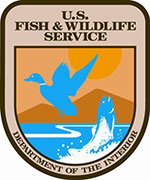
Sites in this Exchange
Copper River Delta
Alaska, USA
The Copper River Delta in Alaska is an important staging area for nearly five million migrating shorebirds in early May, and also provides nesting […]
Grays Harbor
Washington, USA
Grays Harbor is a large bay on the southern coast of Washington State used by Red Knots and many other species of shorebirds for […]
Willapa Bay and Longbeach Peninsula
Washington, USA
Willapa Bay and the Long Beach Peninsula represent the largest remaining tidal mudflat and coastal salt marsh habitat in southwestern Washington […]
Bahía de Todos Santos
Baja California, Mexico
Off the coast of Ensenada, in Baja California, Bahía de Todos Santos hosts a number of overwintering migratory birds, including roselaari Red Knots […]

Produced with support from the Commission for Environmental Cooperation – www.cec.org
The Commission for Environmental Cooperation (CEC) is an intergovernmental organization that supports the cooperative environmental agenda of Canada, Mexico and the United States to green North America’s economy, address climate change by promoting a low-carbon economy, and protect North America’s environment and the health of its citizens.
To foster North American conservation opportunities for Semipalmated Sandpipers (Calidris pusilla) and Red Knots (Calidris canutus—rufa and roselaari subspecies), the Commission for Environmental Cooperation (CEC) started an initiative to inform, engage and connect communities at key sites for these two species. This included linking sites in the Pacific flyway and the Atlantic flyway.




